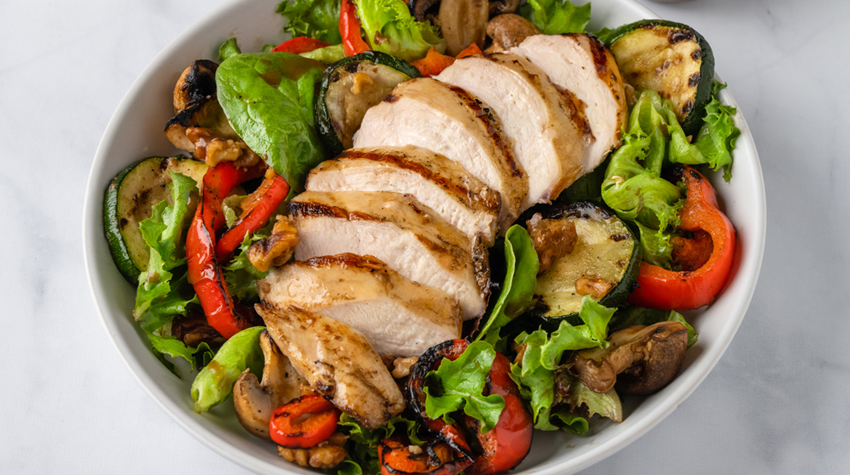How to Craft & Communicate Your Ingredient Story
Published on: 08/23/2024 in All, Profitablity & Business Strategies, Featured
Published on: 08/23/2024 in All, Profitablity & Business Strategies, Featured

Ingredient transparency isn’t a fad. It’s an essential commitment that, when properly communicated, sets your restaurant apart from others. When you craft and convey your ingredient story, you open a gateway of trust and authenticity to your customers. They will reward you with their dining dollars, which drives profits.
An ingredient story chronicles your comprehensive perspective on sourcing and ingredient excellence. A resonating narrative highlights your purchasing philosophies backed by your sustainability and ethical commitments.
On the “about” page of its website, for example, BurgerFi calls out its quality commitment with its beef and chicken, highlighting, “We like the word ‘No!’” It amplifies that statement: “Our ‘Never-Ever’ Program ensures our Angus beef is NEVER exposed to steroids, antibiotics, growth hormones or additives—EVER.”1 Explaining its poultry, BurgerFi’s website shares, “Our chicken is sourced from family-owned Springer Mountain Farms. Cage-free. No hormones or antibiotics ever. American Humane Certified.”1
Pollo Tropical details its Animal Welfare and Handling Policy journey on its website. In part, it states, “[i]t is our commitment at Pollo Tropical to source only chickens certified by Global Animal Partnership (GAP) and require all chickens to be processed in a manner that avoids pre-stun handling and instead utilizes a multi-step controlled atmosphere processing system that induces an irreversible stun by 2024.”2
It makes good business sense for BurgerFi and Pollo Tropical to communicate their ingredient stories. Research shows that 29% of surveyed consumers typically choose chicken/turkey items with premium qualities/benefits and pay more for them.3 Repeat business is the added bonus for intentionally conveying the premium ingredients.3
In crafting your ingredient story, prioritize truthful transparency along with your nonnegotiable standards. This may include a list of unacceptable practices or additives as well as an emphasis on animal welfare, in which you showcase policies that are applicable to the relevant products, such as humanely raised, grazed on U.S. pastures and cage-free environments.
Chipotle Mexican Grill’s website prioritizes transparency with its list of “53 Real Ingredients” that allows the website visitor to click on any ingredient for a description of such particulars as variety, origin, preparation method and more.4 Additionally, the chicken ingredient statement highlights, “We currently source only Responsibly Raised birds, which means they’re fed a 100% vegetarian diet with no antibiotics...”4
Panera Bread shares its “No No List” of more than 70 prohibited items with this description: “At Panera Bread, ‘clean’ describes food that does not contain the artificial preservatives, sweeteners, flavors and colors from artificial sources on this ‘No No List.’ You won’t find any of these in our ingredient statements for our US bakery-cafe food menu and grocery products.”5
To effectively tell your ingredient story, coordinate all your communication channels:
● Use your website for detailed insights.
● Activate social media for engaging updates and visuals.
● Display in-store signage and menu descriptors to directly inform diners.
Each platform offers a unique way to highlight your commitment to quality and transparency.
Shake Shack deploys a cross-platform strategy to tell its “Stand for Something Good” story. The catchy phrase tops the “values” section of its website where it promotes that it holds itself accountable. Part of that effort includes a link to its “industry-leading animal welfare practices,” which include humane treatment along with no antibiotics and no animal by-products in the feed for its chicken, beef and pork.6
Meanwhile, Shake Shack’s Facebook page touts “From its premium ingredients and caring hiring practices to its environmentally responsible designs and deep community investment, Shake Shack’s mission is to Stand For Something Good.”7 On the menu, it highlights its quality ingredient sourcing. Next to its chicken sandwiches, guests learn about it, “whole white meat, never frozen, no antibiotics, hand breaded and crisp-fried to order in cholesterol-free soy oil.” Next to its burgers, the menu states, “Our custom 100% Angus beef blend, never frozen, no hormones or antibiotics ever, humanely raised and grazed in the USA.”
Above all, remember that highlighting your ingredient story resonates with conscientious diners. A strategic focus on ingredient transparency not only enriches your operation’s appeal, it also drives customer visits and boosts profits.3